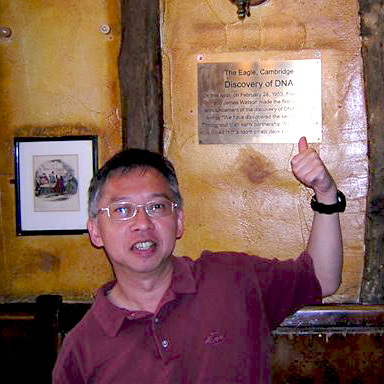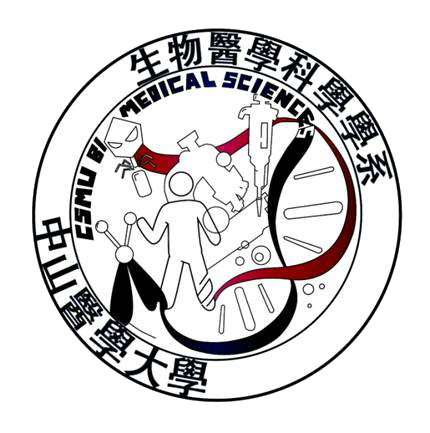
Jia-Ching Shieh
(Associate Professor; Ph. D)
Phone
Tel(Office):886-4-2473-0022 ext 12371Tel(Lab):886-4-2473-0022 ext 11807
Interests in Research
Jia-Ching Shieh is interested in how genetic, epigenetic, and environmental factors get involved in a variety of human diseases, which is in concert with the subjects of his teaching. His main research focuses presently addresses the mechanism underlying morphological plasticity, key to switch of commensalism-to-pathogenesis, of the opportunistic human fungal pathogen Candida albicans, which is significant in both biology and medicine. Unprecedentedly, his team found that C. albicans CDC4 (CaCDC4) and CDC7 (CaCDC7) suppress yeast-to-hypha transition, contrasting to their evolutionarily conserved roles in the G1-to-S transition and initiating DNA replication of the mitotic cell cycle, respectively. His studies revealed the cross-talk between morphogenesis and stress and nutrient responses, environmental cues, and the role of epigenetic regulation in morphological plasticity and are under further investigation using classical approaches of genetics, molecular biology, cell biology and biochemistry incorporated with the cutting edge technologies of functional genomics, proteomics, and epigenomics. Additionally, to overcome C. albicans being an incomplete sexual cycle diploid with a non-canonical codon usage, his team established novel platforms such as gene deletion, conditional gene expression, bimolecular fluorescence complementation (BiFC), and E. coli-based ubiquitination, which reinforce revealing unique genes involved in morphogenesis and other virulence-related genes and their functional analysis. These platforms are available and used by dozen of research teams at home and abroad
Publications (at most 7 publications in recent 5 years)
- Lai WC, Hsu HC, Cheng CW, Wang SH, Li WC, Hsieh PS, Tseng TL, Lin TH, Shieh JC ,Filament Negative Regulator CDC4 Suppresses Glycogen Phosphorylase Encoded GPH1 That Impacts the Cell Wall-Associated Features in Candida albicans Journal of Fungi 2022; 8(3):233: 1-17.(SCI)
- Lai WC, Sun HS, Shieh JC.,Establishment of tetracyclineregulated bimolecular fluorescence complementation assay to detect protein-protein interactions in Candida lbicans Scientific Reports 2020; 10(1):2936: 1-12.(SCI)
- Liao WL, Lin JY, Shieh JC, Yeh HF, Hsieh YH, Cheng YC, Lee HJ, Shen CY *, and Cheng CW * ,Induction of G2/M Phase Arrest by Diosgenin via Activation of Chk1 Kinase and Cdc25C Regulatory Pathways to Promote Apoptosis in Human Breast Cancer Cells International Journal of Molecular Sciences 2019; 21, 172: 1-14.(SCI)
- Lee YT, Fan YY, Sun YW, Hsu HC, Weng SM, Tseng TL, Lin TH, Shieh JC,THR1 mediates GCN4 and CDC4 to link morphogenesis with nutrient sensing and stress response in Candida albicans International Journal of Molecular Medicine 2018; 42: 3193-3208.(SCI)
- Chen CW, Yu JC, Hsieh YH, Liao WL, Shieh JC, Yao CC, Lee HJ, Chen PM, Wu PE, Shen CY,Increased Cellular Levels of MicroRNA-9 and MicroRNA-221 Correlate with Cancer Stemness and Predict Poor Outcome in Human Breast Cancer. Cellular Physiology and Biochemistry 2018; 48(5): 2205-2218.(SCI)
- Tsai KD, Lee WX, Chen W, Chen BY, Chen KL, Hsiao TC, Wang SH, Lee YJ, Liang SY, Shieh JC, Lin TH,Upregulation of PRMT6 by LPS suppresses Klotho expression through interaction with NF-κB in glomerular mesangial cells. Journal of Cellular Biochemistry 2018; 119(4): 3404-3416.(SCI)
- Liu SY, Huang CH, Shieh JC, Lee TL,Cinnamomum osmophloeum Kanehira ethanol extracts prevents human liver-derived HepG2 cell death from oxidation stress by induction of ghrelin gene expression Journal of Biosciences 2017; 42 (3): 439-448.(SCI)
- Shyu HY, Yen LR, Hsieh YH, Shieh JC, Wang HW, Cheng CW,Association of eNOS and Cav-1 gene polymorphisms with susceptibility risk of large artery atherosclerotic stroke PLOS ONE 2017; 12(3): 1-12.(SCI)
- Shyu HY, Chen MH, Hsieh YH, Shieh JC, Yen LR, Wang HW, Cheng CW.,Association of eNOS and Cav-1 gene polymorphisms with susceptibility risk of large artery atherosclerotic stroke. PLoS One 2017; 12(3):e01: 1-12.(SCI)
- Lai WC, Chang Tw, Wu CH, Yang SY, Lee TL, Li WC, Chien T, Cheng YC, Shieh JC,Candida albicans Dbf4-dependent Cdc7 kinase plays a novel role in the inhibition of hyphal development Scientific Reports 2016; 6:33716: 1-13.(SCI)
- Lai WC, Sun HFS, Lin PH, Lin H, Shieh JC��,A new rapid and efficient system with dominant selection developed to inactivate and conditionally express genes in Candida albicans Current Genetics 2016; 62 (1): 213-235.(SCI)
- Shieh JC,The conservation of genotoxic stress-induced morphological changes in yeasts. Edorium Journal of Biomedical Science 2015; 1: 1-6.(其他)
- Chien T, Tseng TL, Wang JY, Shen YT, Lin TH, Shieh JC,Candida albicans DBF4 gene inducibly duplicated by the mini-Ura-blaster is involved in hypha-suppression Mutation Research - Fundamental and Molecular Mechanisms of Mutagenesis 2015; 779: 78-85.(SCI)
- Yang YC, Chen PN, Wang SY, Liao CY, Lin YY, Sun SR, Chiu CL, Hsieh YS, Shieh JC, Chang JT,The differential roles of Slit2-Exon 15 splicing variants in angiogenesis and HUVEC permeability Angiogenesis 2015; 18(3): 301-312.(SCI)
- Tseng TL, Lai WC, Lee TL, Hsu WH, Sun YW, Li WC, Cheng CW, Shieh JC,A role of Candida albicans CDC4 in the negative regulation of biofilm formation Canadian Journal of Microbiology 2015; 61: 247-255.(SCI)
